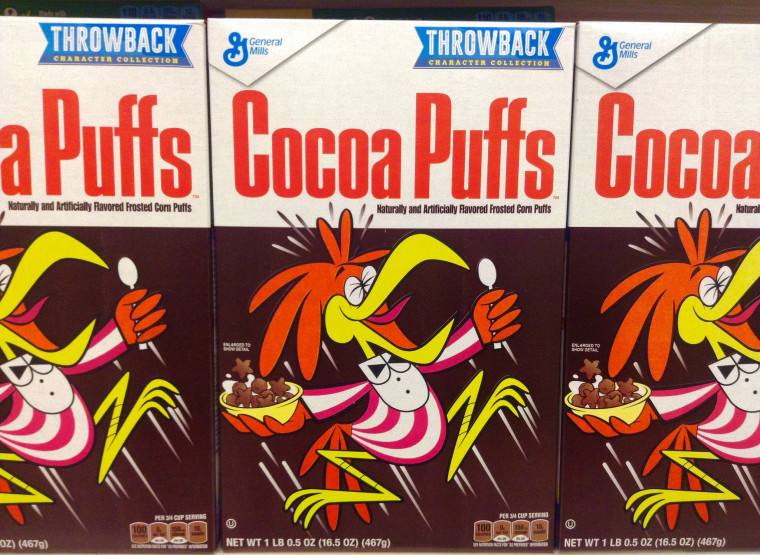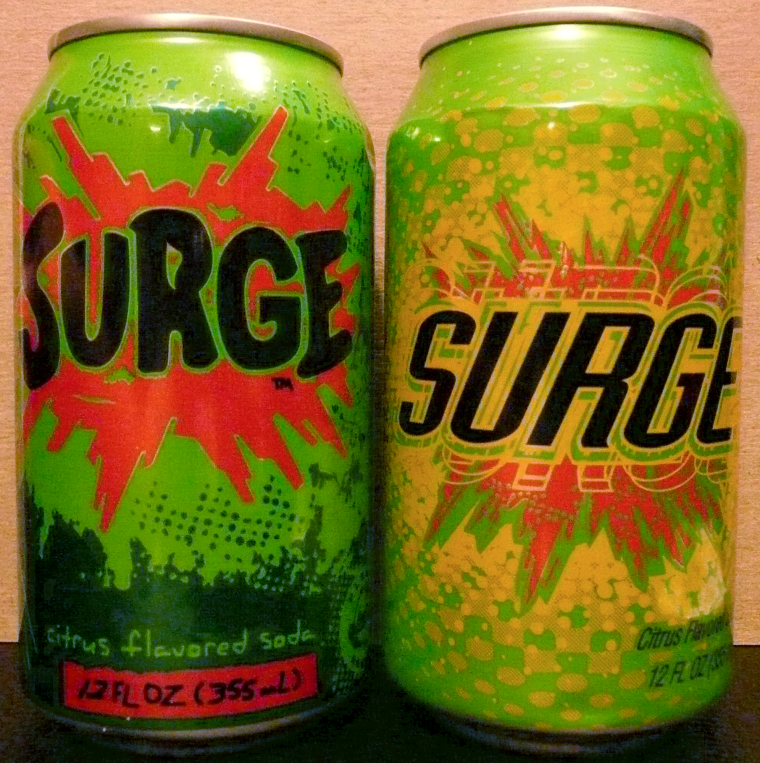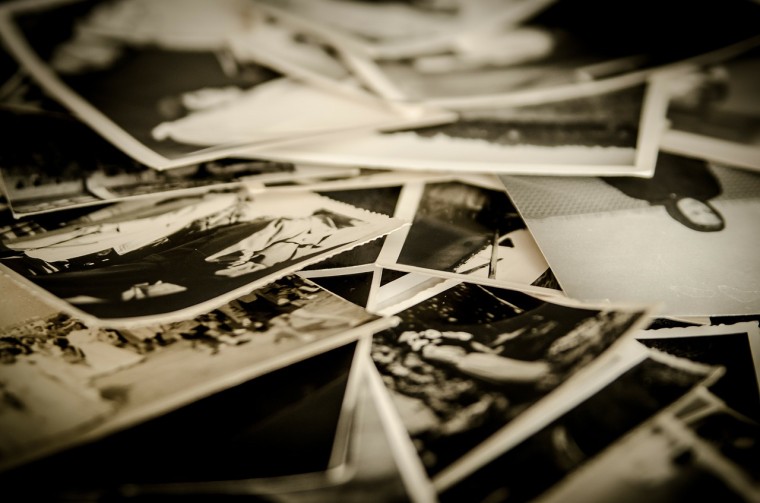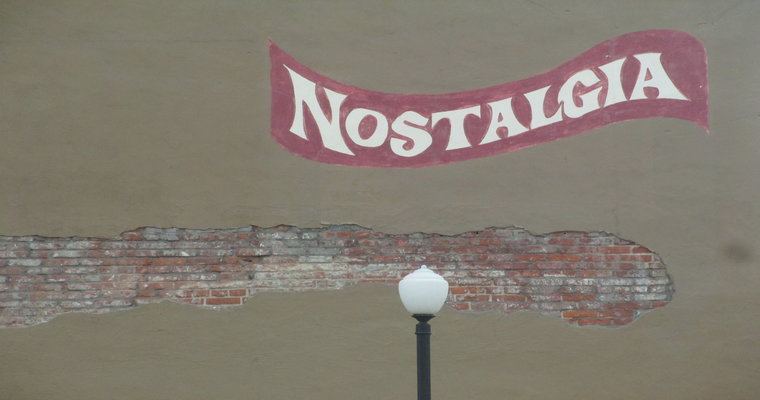Whether it’s the smell of your mom’s cooking, hearing a song from your senior year of high school, or seeing a pair of sneakers from your childhood, there are numerous occasions, sensory inputs, objects, and social situations that can ignite the yearning of yesterday to come flooding back.
That sense of nostalgia is being used by clever marketers with a marketing strategy that is appropriately called nostalgia marketing.
What is Nostalgia in Marketing?
 Image Source: Mike Mozart/Flickr
Image Source: Mike Mozart/FlickrNostalgia marketing is all around you, yet you might not notice it. Walk down the grocery aisle and you’re bound to see a product that uses a label with a classic font and distinct shapes to remind you of a specific era. Turn on the TV and you’re sure to stumble upon a commercial that has an actor from a series that has long been off the air. Turn on the radio and you might hear a new band using a guitar riff that was purposely designed to take you back in time.
Sometimes it’s accidental or has been influenced by things from the past, and other times it’s intentional (and very, very effective). That’s how much nostalgia plays a role in marketing today.
How do you feel when you see an ad for your favorite limited edition menu item from a fast food chain? While it’s probably not the best meal you’ll consume, both for health and taste, there’s definitely some excitement when you know that the McRib from McDonald’s or Burger Kings’ Chicken Fries have returned.
Think about the times that you’ve been flipping through TV channels or NetFlix and spot a favorite series from your childhood, like “Full House,” “Bill Nye The Science Guy,” or “Double Dare”. There’s a good chance you’ll sit back and enjoy what the nostalgia provides – which is a perfect example of why those shows are still on the air.
But, what exactly is nostalgia? Dictionary.com defines nostalgia as:
“A wistful desire to return in thought or in fact to a former time in one’s life, to one’s home or homeland, or to one’s family and friends; a sentimental yearning for the happiness of a former place or time.”
Nostalgia in marketing, then, means using themes or products from the past in your current marketing strategy to create a unique emotional feeling in customers. For example, you may recall how often brands have been embracing the term “throwback” over the last several years.
Throwback, which is simply described as “a person or thing that is similar to someone or something from the past or that is suited to an earlier time,” has been in use since 1888. Recently, we’ve seen everything from “Throwback Jerseys” from professional sports teams to “Pepsi Throwback” on grocery store shelves to weekly “Throwback Thursdays” on social media channels where we share our favorite images from years ago.
Savvy marketers have realized that they can emotionally connect with their customers by providing a sense of nostalgia with techniques like “throwback” content or products.
Why Nostalgia is So Powerful
 Image Source: Pixabay
Image Source: PixabayNostalgia was originally described as a “neurological disease of essentially demonic cause” by Swiss doctor Johannes Hoffer in 1688 to describe Swiss mercenaries who were homesick. At the time, military physicians attributed this phenomenon to “damage” to the soldiers ear drums and brain cells by the unremitting clanging of cowbells in the Alps.
During the 19th and 20th centuries nostalgia was commonly classified as either an “immigrant psychosis,” a form of “melancholia” and a “mentally repressive compulsive disorder.”
While science has proven that nostalgia is not caused by cowbells, demons, or mental disorders, science has learned that nostalgia is a universal feeling that can be found in children as young as seven years old. Additionally, research has discovered that nostalgia can actually be good for you.
Lead by Dr. Constantine Sedikides at the University of Southampton, researchers found that nostalgia can “counteract loneliness, boredom, and anxiety.” It also “makes people more generous to strangers and more tolerant of outsiders. Couples feel closer and look happier when they’re sharing nostalgic memories. On cold days, or in cold rooms, people use nostalgia to literally feel warmer.”
Dr. Constantine also revealed that people experience nostalgia at least once a week and that it makes them feel better. Other researchers have found nostalgia is triggered to help cope with stressful moments and life transitions. Dr. Clay Routledge, a Professor of Psychology at North Dakota State University, discovered that people who were exposed to popular songs, along with the lyrics, were more likely than a control group to say that they felt “loved” and that “life is worth living”.
For marketers, nostalgia can have an extremely powerful emotional hold on an audience. When used correctly, it can become a powerful part of a marketing strategy.
For example, brands like Pepsi and Nike are using retired logos and designs of their past, calling them “retro” or the aforementioned “throwback”. Nike releases retro versions of their sneakers annually, such as past models of the popular Jordan line, which quickly become a collector’s item for fans and sneaker enthusiasts. Even though these sneakers are brand new, they have a “retro throwback” look from a classic pair of sneakers from the 70s, 80s, or 90s.
Starting in 2009, Pepsi introduced its “Throwback” soda line that contained real pure cane sugar as its main sweetener, which hasn’t been done since the 1980’s. The throwback series also included retro packaging and mascots for Pepsi Throwback and Mountain Dew Throwback.
In 2012, the Miller Lite brand had been in a three-year sales slump and needed to make a change. After pursuing several design changes, they decided to use their 1975 design and re-introduce it via a cross-promotion with the movie Anchorman 2, which was set in the late 70’s at the height of Miller Lite’s popularity. A year later both were released, and the promotion completely revitalized the brand just by using its iconic white can design.
Nostalgia Marketing Today
 Image Source: “Surge Soda Cans” by Ilikenwf (talk) via Wikipedia
Image Source: “Surge Soda Cans” by Ilikenwf (talk) via Wikipedia We all are aware that nostalgia is all about giving us the feeling of “wow, blast from the past!”
Currently, the 1990’s are the era we see being utilized by brands as those of us that grew up in the decade are in our prime-purchasing years. By now this generation has grown up, finished school and has the disposable income companies crave. Everything from fashion to music from the 90’s has a big pull right now with the Millennial demographic.
People love to reminisce about their childhood and teen years, and many of these companies are looking for ways to take what’s old and make it fresh. Sometimes, the customers even come to you. Coca-Cola saw this when it decided to resurrect its Surge brand that was popular in the 90’s. Customers remembered the soda from roughly 20 years ago and launched an IndieGogo campaign to buy a $4000 billboard near Coke’s headquarters to bring Surge back. Coke now sells cases of it exclusively on Amazon for around $30/12 pack!
Nostalgia in Content
 Image Source: Pixabay
Image Source: PixabayIncorporating nostalgia or company history within your content can be achieved through:
- Writing content in a fun way that will increase engagement and social sharing.
- Forging an emotional connection with your specific audience.
- Showcasing your company’s history – Ford does a lot of throwback campaigns and events where attendees can see old cars in person.
Perhaps one the most effective organizations that is using nostalgia in it’s content is Buzzfeed. Buzzfeed generates its income through creating articles targeted to a specific niche.
For example, there was a post entitled “14 Things Everyone Who Grew Up in Canada Will Remember.” The piece contained examples of things that only happened in Canada, such as the invention of a piece of currency called the Toonie. At the end of the post there was McCain Deep ‘n’ Delicious cakes advertisement, who happened to be the brand publisher. This campaign worked well because McCain is a longstanding Canadian brand that fit perfectly within the content.
Another example would be the women’s lifestyle blog Bustle. The brand released a list of the “10 Summer Songs From the 90s That Will Totally Make You Nostalgic.” The brand just didn’t welcome the summer with a list of 90’s music, Bustle also embedded YouTube videos into the post. This was effective because it was fun, and if you wanted to hear one of your favorites, you could watch the embedded video.
The use of embedded videos is a fantastic way to really engage with your audience. Having a list of songs that people are reading about isn’t going to resonate with someone if they can’t actually listen to the song or watch the music video. Having media-rich content takes your campaign to the next level and gives it that emotional connection that is at the heart of the concept of nostalgia. Think of ways you can include the proper media types that make the most sense for the type of nostalgia you’re going for – if it’s music, then include the actual songs. YouTube is a no-brainier for film and TV references.
Nostalgia & Social Media
 Image Source: Pixabay
Image Source: PixabayNostalgia can be used to create new content in addition to sharing old content on social media platforms. For example, you could create an industry specific music video, but in the style of 1940’s jazz. You could also construct an infographic that illustrated the changes your company has experienced throughout the years. No matter which content medium you decide to use, you need to think about how you’re going to reshare what happened in the past, as well as finding a creative way to spin that into new content.
One place to find past content is in your company’s archives. Maybe you could unearth and share an epic 80’s training video on a blog post or Facebook status for “Throwback Thursday”. You could then update that video by recreating it with current team members and new guidelines. Wouldn’t that be more interesting than just a traditional safety video?
It’s also no secret that photos should be the main focus of all content and social media posts – just scroll through any of your social media accounts and you’ll be bombarded with visuals.
But, there’s actually evidence that backs this claim up. Visuals are actually processed 60,000X faster in the brain than text. Furthermore, since visual content is social media friendly, it’s more likely to be shared and improve engagement with your social media audiences. Since a lot of the content involving nostalgia includes visual content like photos and videos, this is a perfect match.
Here a couple of others to come across past content and use it for social media.
- Comb the Company Archives: The New York Times has a fascinating Twitter archive profile that shares past news stories along with photos of their coverage of current events. One example is sharing their coverage of proms back in the 70’s that includs photos and a time machine post about what attendees wore and what they did afterwards. Then, compare that profile to what the current prom experience is for students.
- Create Events That Are Begging to be Shared on Social Media and Elsewhere Online: The Kansas City Royals hold an annual retro event called “Dressed to the Nines” that is dedicated to the city’s previous baseball team, The Monarchs. The Royals ask fans to dress like people did in the 1930’s/40’s and then shares those pictures of fans and impersonators in their retro attire on its Twitter account. With this type of content, you can easily reshare , write a roundup post, and crowdsource content with a unique hashtag surrounding the event.
In addition to posting content from the past, consider creating your own original content. A recent comic strip that went viral got tons of laughs as it illustrated how the excitement of receiving an email a decade ago is much like that of being given a physical card today (the “you’ve got mail” excitement of the AOL era). The internet hosting brand Hostgator recently was successful with a neat infographic showing what kids did in the past for entertainment before the ubiquitous internet.
These are two fantastic examples of how one can create new content that has a nostalgic spin to it. Comparing how life is today to the past can remind people about how “life used to be”, sometimes in a humorous way but also can have a serious tone as well.
A car manufacturer could develop an article harkening to the days when power windows didn’t exist to allude to the innovation it has been responsible for; a frozen seafood brand could remind you through an infographic how tough it used to be to get that fish from the sea to your plate.
The possibilities of creating new content with nostalgia are endless.
Examples of Nostalgia Marketing For Small Businesses
 Image Source: Pixabay
Image Source: PixabayMany of you are still probably think while this practice sounds great and looks good on paper, that it’s only effective when used by big companies with big teams of creative people and the budget to pull it off.
Don’t think nostalgia marketing can work for your business? Think again! Here are a few examples to further illustrate how creative even local businesses can get using the technique:
- A doctor’s blog could write an article that discusses the history of those “treasure chest” boxes of toys that they used to keep for the little ones when they would come in for check-ups; many of you reading this right now know exactly what this is and the nostalgia is kicking in!
- Your local mechanic sends out a postcard mailer of the street in the year his business was built on, and it reminds the community about all of the years the shop has been serving them.
- Here’s a great idea for a law firm – remind us through an infographic timeline of when the asbestos cover-up finally became public knowledge and the laws that we’re put in place because of it, with other important historical dates to remind the viewer what the world was like during that time.
- Own a bakery? Decorate your shop for a promotion where you find old kitchen equipment that was used by your grandmother to remind your customers of their own experiences in their own grandmother’s kitchen
These are just some of the many, many ways any business can creatively inject nostalgia into a marketing or advertising campaign. Every business has people behind it keeping it alive and has clients and customers helping it thrive. All those people have a history and that’s where you find the nostalgic topics that make the campaign a success.
Nostalgia Dos & Don’ts
 Image Source: Pixabay
Image Source: PixabayFor as much fun as you and your audience will have with your content, there are some things to pay attention to when putting the pieces of the puzzle together. Remember, the goal of your campaign is to bridge the gap between your brand and the customer by creating an emotional connection. The goal is to make sure it’s a positive one, and history has a lot of bad memories attached to it, along with the good ones. Make sure to do your due diligence and avoid bad memories, or your campaign could backfire.
Also, make sure to not get yourself in any legal trouble by using someone else’s content. Pay attention to copyrights, and get creative in how to present it without stepping on anyone’s toes. Check Creative Commons licenses, research the Library of Congress or content that is in the public domain, utilize tools like Photopin or Pixabay, and if needed consult a lawyer.
Here’s a few more important tips to make sure your nostalgia marketing stays on the right track:
Nostalgia Do’s
- Nostalgic content is best created by the people who lived in the time or geographical region you are recalling. As an American, it wouldn’t make sense for me to write a post about growing up in Canada. It would make much more sense to have someone who lived the experience write that article.
- Utilize current events, holidays, and trends to build content as a flashback. Christmas is a great holiday to use nostalgia since it can easily take us back to our childhoods. So, a pretty effective piece of content could be ‘15 Toys From the 90’s That Every Kid Wanted.’
- Consider your audience and create content surrounding their elementary and high school years, ages 6-16. Also, consider ‘parental nostalgia’, which is nostalgia parents have for their children’s childhoods.
Nostalgia Dont’s
- It has to fit your niche or else it will seem like “newsjacking” – which is when brands take something trending and try to build content around it. Newsjacking isn’t effective because it comes across as cheesy and forced.
- It needs to be unique to your company; don’t copy what’s already been done. What works for one brand may not fit with yours.
- Do your research – time and laws have changed, so don’t bring up memories some people might find offensive.
Nostalgia Campaign & SEO
 Image Source: Antonio Manfredonio/Flickr
Image Source: Antonio Manfredonio/FlickrWe’ve covered in detail how businesses of all types can utilize creative strategies to increase engagement with their potential customers. Those who don’t “get” the technique often don’t understand just how powerful it can be or think launching a campaign is all about trying to directly sell a product.
While that is our end goal and many companies do an excellent job at it, that doesn’t have to be the only goal. In fact, for many brands, utilizing nostalgia marketing is one of the best techniques for adding to their SEO strategies.
It’s a no brainer. Create a listicle, infographic, or video that utilizes all of the suggestions outlined above. Find the right channels to syndicate this nostalgia content, and if done right you’ll get all those highly coveted links and the viral social traction you need to give your rankings a boost. Nostalgia is not just a gimmick.
Conclusion
For marketers, nostalgia makes a whole lot of sense. It’s a reminder of a better time. It creates an emotional connection between your brand and audience. And, it’s content that can easily be shared across multiple channels.
However, you can’t force nostalgia on your audience. You have to make it genuine because our memories are too precious to be tinkered with – which is why you need to steer clear of moments or products that have a negative connotation.
You may have to put a little extra effort when it comes to nostalgia, but the payoff will substantial if you are able to make your customers happy and engaged.
Did you miss my June 2015 my webinar on nostalgia marketing? Check it out below:
You can also check out the slides on Slideshare.
Featured Image: Billy Hathorn (Own work) via Wikimedia Commons





![AI Overviews: We Reverse-Engineered Them So You Don't Have To [+ What You Need To Do Next]](https://www.searchenginejournal.com/wp-content/uploads/2025/04/sidebar1x-455.png)